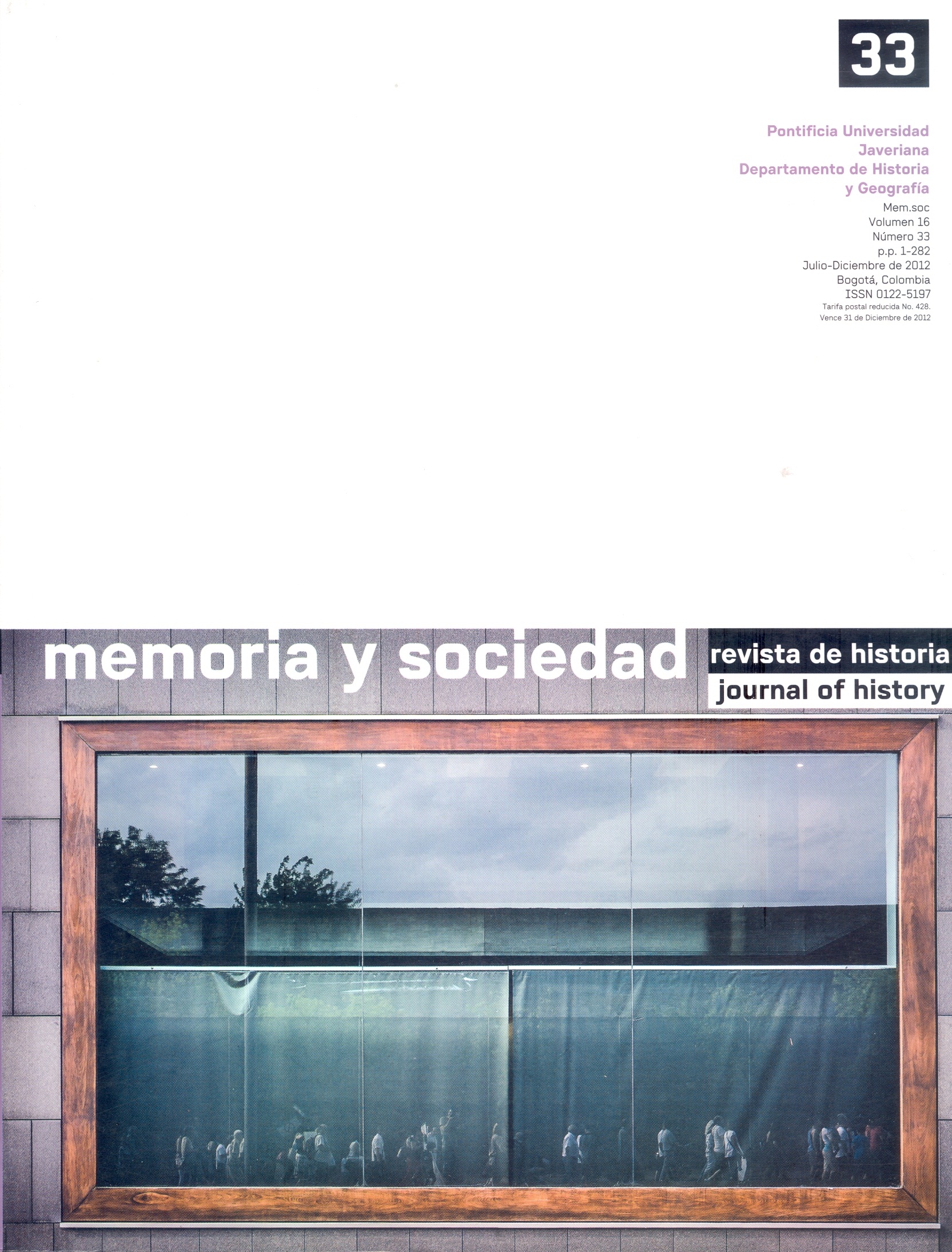Abstract
This article deals with the particular case of Cecilia Porras, an artist born in Cartagena. It analyzed the sociological aspect of the arts, some gender issues and herself as an artist, while cultural ruptures where appearing such as the enunciation of women that started to have new social and cultural roles in the society of Cartagena. Is also explores her participation and contribution of the construction of the new plastic languages that defined the meaning of Modern Art in the Country. In order to understand the role of Cecilia Porras in her original context, the text offers a reflection about how in the mid 20th Century, the art scene in Cartagena responded to tense areas between the modern momentum and the traditional way of thinking of the Institutions.The journal Memoria y Sociedad is registered under a Creative Commons Attribution 4.0 International Public License. Thus, this work may be reproduced, distributed, and publicly shared in digital format, as long as the names of the authors and Pontificia Universidad Javeriana are acknowledged. Others are allowed to quote, adapt, transform, auto-archive, republish, and create based on this material, for any purpose (even commercial ones), provided the authorship is duly acknowledged, a link to the original work is provided, and it is specified if changes have been made. Pontificia Universidad Javeriana does not hold the rights of published works and the authors are solely responsible for the contents of their works; they keep the moral, intellectual, privacy, and publicity rights.
Approving the intervention of the work (review, copy-editing, translation, layout) and the following outreach, are granted through an use license and not through an assignment of rights. This means the journal and Pontificia Universidad Javeriana cannot be held responsible for any ethical malpractice by the authors. As a consequence of the protection granted by the use license, the journal is not required to publish recantations or modify information already published, unless the errata stems from the editorial management process. Publishing contents in this journal does not generate royalties for contributors.

